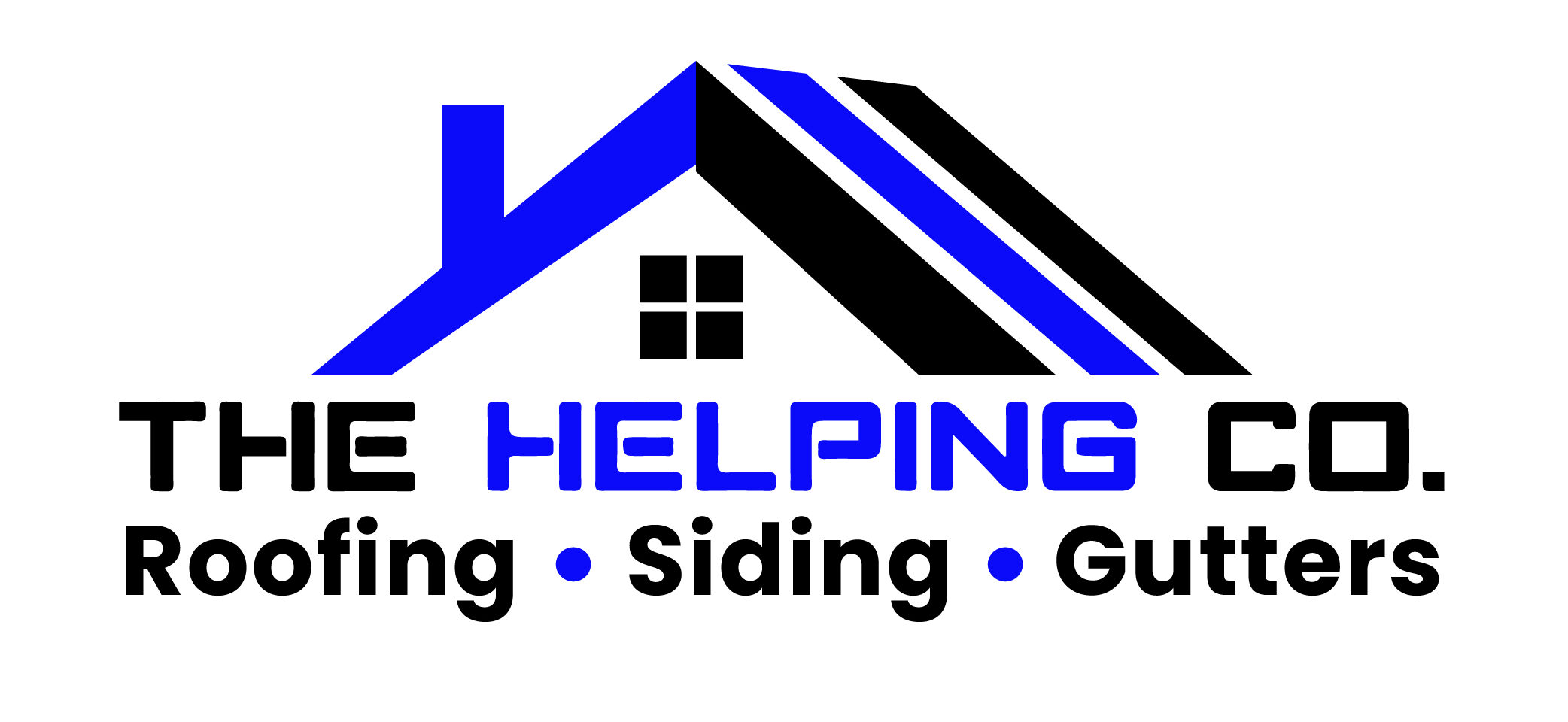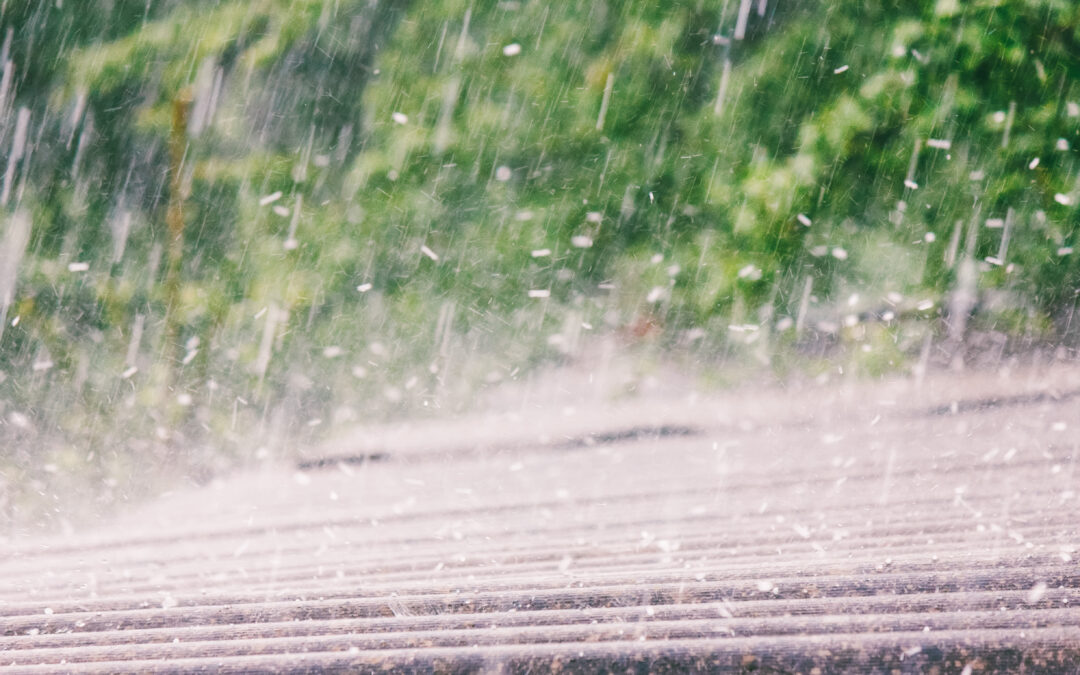Understanding Hail Damage to Roofs: What Homeowners Need to Know
When hail strikes, it can leave dents in cars, tear through trees, and destroy your roof. And since roofing damage isn’t always immediately visible, many homeowners don’t realize there’s a problem until leaks or mold set in weeks or even months later. In Southeastern Pennsylvania, where hailstorms are becoming increasingly frequent, understanding how hail affects your roof and what to do about it is essential to protecting your home, which is likely your biggest investment.
At The Helping Company, we specialize in helping homeowners in Reading and throughout Southeastern Pennsylvania inspect, repair, and restore hail-damaged roofs. From free inspections to insurance claim support and emergency services, we’re your local, family-owned partner in home protection. Contact us for more information.
What is Hail, and Why Does It Cause so Much Damage?
Hail forms when strong thunderstorm updrafts carry raindrops into freezing layers of the atmosphere. The raindrops freeze into ice and grow larger as they’re pushed upward over and over again. Eventually, gravity wins, and the hailstones fall—sometimes the hailstones may be as small as peas, other times as large as marbles, golf balls, or even baseballs.
The destructive power of hail lies in its combination of mass and speed. Large hailstones can reach speeds of up to 100 mph, easily damaging siding, windows, and most critically, your roof. Even small hail can erode roofing materials over time, leading to premature aging and failure.
Hail Risks in Southeastern Pennsylvania
You may not think of Reading, PA, as a hail-prone area, but recent climate trends suggest otherwise. According to Interactive Hail Maps, the Reading, PA area has experienced 22 reports of on-the-ground hail by trained spotters and has been under severe weather warnings 36 times in the past 12 months. A report from Yahoo News indicates that Pennsylvania saw major hail events rise by 88% between 2022 and 2024, highlighting an increasing trend in hailstorm frequency and severity in the region. And the Pennsylvania State Climatologist notes that severe thunderstorms, which often produce hail, are most common in the spring and early summer months, aligning with the assertion that these seasons are especially risky for hail events in Southeastern Pennsylvania.
How Hail Affects Your Roof
Hail doesn’t damage all roofs in the same way. The severity and type of damage depend on both the roofing material and the age or condition of the roof.
Asphalt Shingles
Asphalt shingles are the most common roofing material in Southeastern PA. Hail can knock off the granules that protect shingles from UV rays, expose the underlayment, and create soft spots or “bruises.” These soft spots may not leak immediately, but the damage often lead to problems later.
Metal Roofs
Metal is more resistant structurally, but often shows visible dents after hailstorms. Over time, damage to the protective coating can lead to rust, which can compromise structural integrity.
Clay or Concrete Tile
These roofs are brittle and prone to cracking. A single large hailstone can shatter multiple tiles, allowing water to penetrate the roof deck.
Wood Shakes and Shingles
Wood is especially vulnerable when dry or aged. Hail can split the wood along the grain, leaving gaps for moisture, insects, and mold to enter.
Flat Roofs
Hail can cause blisters, punctures, or membrane tears, especially if water pools in areas with poor drainage.
Signs of Hail Damage
After a storm, you might be tempted to do a quick visual check and assume everything looks fine, but hail damage is often subtle or hidden.
Exterior Signs
- Dents or cracks on vents, flashing, gutters, and downspouts
- Excessive missing shingle granules (usually found in downspouts)
- Shingles that appear bruised or are soft when touched
- Cracked or broken tile or slate
- Impact marks on siding or fencing (which often indicate there is also damage to your roof)
Interior Signs
- Water stains on ceilings or walls
- New mold or mildew smells
- Peeling paint, especially in upper corners or attics
- Sagging drywall or ceiling tiles/
- Light showing through attic rafters
If you notice any of these signs after a hailstorm, contact The Helping Company right away for a professional inspection. Delaying even a small repair can lead to thousands in water damage.
What to Do After a Hailstorm
If a hailstorm passes through your area, don’t wait for leaks to confirm there’s damage. The best course of action is proactive.
Walk the perimeter of your home and look for obvious damage to siding, gutters, and vehicles. These can be clues to what’s happened on the roof.
Document what you see. Take photos of any visible damage and note the date of the storm. This will be helpful for insurance.
Call The Helping Company at 610-234-2210. We offer free roof inspections, and our team knows what hail damage looks like on various roofing materials. Avoid climbing to inspect your own roof. Your safety comes first. Our team is a group of trained professionals with the right experience and equipment.
The Insurance Claims Process (And How We Help)
Homeowners’ insurance typically covers hail damage, but navigating the claims process can be frustrating. That’s where we come in. The Helping Company offers expert assistance with insurance claims. We’ll inspect the damage, document everything, and meet with your insurance adjuster to ensure nothing gets missed. Our experience helps you get the coverage you deserve—without the stress. And we’ll get your claim done fast. Insurance companies often impose strict deadlines for filing hail claims, so timing is critical.
Common Hail Damage Myths
There’s a lot of misinformation out there about roof damage. Let’s bust a few myths.
Myth: If there’s no leak, there’s no damage.
Fact: Hail damage can take months to cause visible leaks. Early detection saves money.
Myth: Insurance will raise your rates if you file a hail claim.
Fact: Hail is often classified as a natural disaster by insurance providers, which means filing a claim typically does not affect your individual premium.
Myth: Hail always leaves obvious dents.
Fact: Some hail damage is nearly invisible to the untrained eye but still voids manufacturer warranties.
Hail Damage Checklist for Homeowners
- Walk around your home and check for dented gutters, vents, or siding
- Look inside the attic for water stains or damp insulation
- Inspect ceilings and walls for peeling paint or new spots
- Check driveways or decks for shingle granules
- Note the date of the storm
Schedule a free inspection with The Helping Company by calling 610-234-2210
Print this out and keep it handy for storm season.
Help After Hail
If your home was recently hit by a hailstorm—or if you’re unsure about your roof’s condition—don’t wait for a small problem to become a major issue. Our team at The Helping Company will inspect your roof, document all damage, and help you move forward with confidence.
📞 Call us at 610-234-2210
📝 Or fill out our online contact form for a free quote
Protect your home from the top down. Trust The Helping Company for professional roofing services in Southeastern PA.

